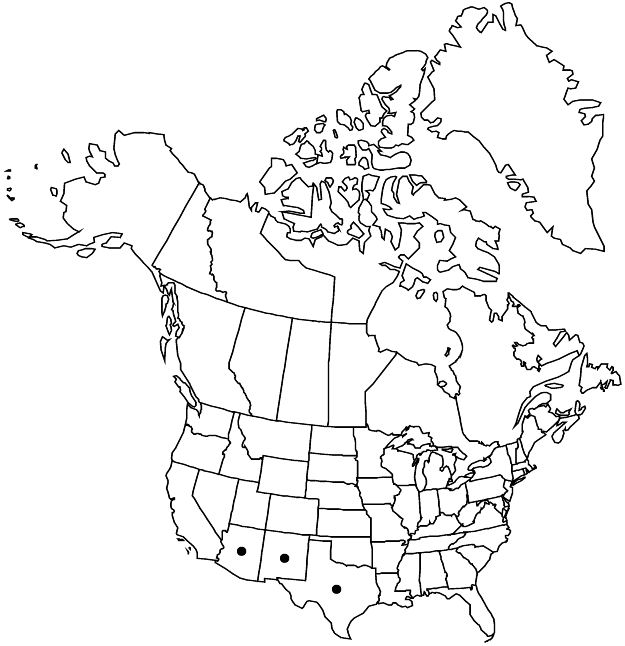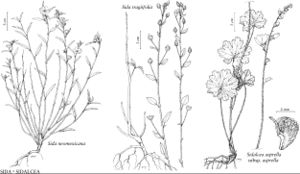Sida neomexicana
Proc. Amer. Acad. Arts 22: 296. 1887.
Herbs or subshrubs, perennial, usually less than 0.5 m, freely branching from base. Stems erect, stellate-puberulent. Leaves: stipules free from petiole, 1-veined, linear to falcate, 5–7 mm, 1/2–1 times length of petiole; petiole 2–10 mm, to 1/4 length of blade, obscurely puberulent; blade narrowly oblong-lanceolate, 2–4.5 cm, 6–15 times longer than wide, base truncate, margins dentate to base, apex acute, surfaces sparsely hairy abaxially, glabrous adaxially. Inflorescences axillary, solitary flowers, usually congested apically. Pedicels usually to 1 cm, subequal to calyx, much shorter than subtending leaf. Flowers: calyx ribbed, 6–7 mm, minutely hairy, lobes triangular; petals yellow-orange to reddish, sometimes drying lavender, 10–12 mm; style 10–12-branched. Schizocarps oblate, 6–7 mm diam., apically puberulent; mericarps 10–12, 3 mm, obscurely reticulate laterally, apex muticous. 2n = ca. 14.
Phenology: Flowering late summer.
Habitat: Open, arid habitats
Elevation: 400–2400 m
Distribution

Ariz., N.Mex., Tex., Mexico (Chihuahua, Coahuila, Durango).
Discussion
Sida neomexicana resembles S. ciliaris in several respects, especially in the congested terminal inflorescences resulting from shorter internodes.
Selected References
None.
